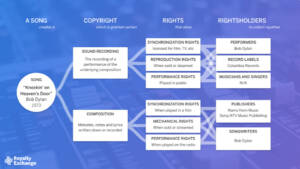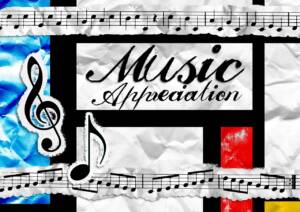How to Create Catchy and Memorable Hooks

Introduction
Definition of a hook
A hook, in the context of writing, is a compelling and attention-grabbing opening line or phrase that captures the reader’s interest and entices them to continue reading. It serves as a tool to engage the audience from the very beginning and make them curious about what lies ahead. A well-crafted hook can make a significant difference in the success of a piece of writing, as it sets the tone, establishes the theme, and creates a memorable impression. Whether it’s a captivating anecdote, a thought-provoking question, or a surprising statistic, a strong hook can leave a lasting impact on the reader and make the content more memorable.
Importance of a catchy and memorable hook
The importance of a catchy and memorable hook cannot be overstated. In today’s fast-paced world, where attention spans are shorter than ever, it is crucial to grab the reader’s attention from the very beginning. A well-crafted hook not only piques curiosity but also sets the tone for the entire article. It entices the reader to continue reading, eager to discover what lies ahead. A catchy and memorable hook has the power to make an article stand out from the rest, leaving a lasting impression on the reader’s mind. Whether it’s a captivating anecdote, a thought-provoking question, or a bold statement, a strong hook can make all the difference in capturing and retaining the reader’s interest. So, if you want your article to make an impact and resonate with your audience, don’t underestimate the importance of a catchy and memorable hook.
Overview of the article
In this article, we will provide an overview of the key concepts and strategies for creating catchy and memorable hooks. A hook is a short and attention-grabbing phrase or melody that captures the listener’s interest and keeps them engaged with the content. Whether you’re writing a song, a blog post, or a marketing campaign, having a strong hook is essential for capturing the audience’s attention and leaving a lasting impression. We will explore different types of hooks, discuss techniques for crafting effective hooks, and provide examples of successful hooks in various industries. By the end of this article, you will have a solid understanding of how to create hooks that resonate with your target audience and make your content stand out from the crowd.
Understanding the Target Audience
Identifying the target audience
Identifying the target audience is a crucial step in creating catchy and memorable hooks. Understanding who your audience is will help you tailor your hooks to their specific interests, needs, and preferences. By knowing their demographics, psychographics, and behaviors, you can craft hooks that resonate with them on a deeper level. Whether it’s through humor, emotion, or a unique perspective, a well-targeted hook will grab their attention and make your content more memorable. So, take the time to research and analyze your target audience before creating your hooks, and watch as your content becomes more engaging and impactful.
Analyzing their preferences and interests
Analyzing their preferences and interests is crucial when it comes to creating catchy and memorable hooks. By understanding what resonates with your target audience, you can tailor your hooks to capture their attention and leave a lasting impression. This involves conducting thorough research, such as analyzing market trends, studying consumer behavior, and identifying popular themes or topics that are relevant to your audience. By delving into their preferences and interests, you can craft hooks that speak directly to their desires, needs, and aspirations. Whether it’s through clever wordplay, emotional storytelling, or relatable experiences, a well-analyzed hook can make all the difference in capturing the interest of your audience and making your content stand out from the crowd.
Understanding their pain points
Understanding their pain points is crucial when it comes to creating catchy and memorable hooks. By identifying and empathizing with the challenges and frustrations that your target audience faces, you can tailor your hooks to address their specific needs and desires. Whether it’s a product, service, or content, understanding their pain points allows you to connect with your audience on a deeper level and capture their attention. By offering solutions and providing value, you can create hooks that resonate with your audience and leave a lasting impression.
Types of Hooks
Question hook
A question hook is a powerful way to engage your readers and make them curious about your article. By asking a thought-provoking question related to your topic, you can grab their attention and encourage them to keep reading. For example, you could start with a question like, ‘Have you ever wondered how to create catchy and memorable hooks that captivate your audience?’ This immediately piques the reader’s interest and sets the tone for the rest of your article. The question hook serves as a gateway to the valuable information you will provide, making it an essential element in creating compelling content.
Statistic hook
A statistic hook is a powerful way to grab the attention of your readers and make your article more engaging. By presenting a surprising or compelling statistic related to your topic, you can immediately pique the curiosity of your audience and encourage them to continue reading. Whether it’s a shocking fact, a thought-provoking number, or a compelling data point, a statistic hook can effectively set the tone for your article and make it more memorable. So, when crafting your article, don’t underestimate the impact of a well-chosen statistic hook.
Storytelling hook
A storytelling hook is a powerful tool that captivates readers and draws them into your article or story. It is a technique used to grab the reader’s attention and make them curious about what comes next. By using a storytelling hook, you can create a strong emotional connection with your audience and make your content more memorable. Whether it’s an intriguing anecdote, a thought-provoking question, or a suspenseful opening line, a storytelling hook sets the tone for your article and entices readers to continue reading. So, if you want to create a catchy and memorable article, mastering the art of storytelling hooks is essential.
Crafting a Catchy Hook
Using powerful words and phrases
Using powerful words and phrases is essential when creating catchy and memorable hooks. These words and phrases have the ability to captivate the reader’s attention and leave a lasting impression. By carefully selecting impactful words and crafting compelling phrases, you can effectively engage your audience and make your hooks more memorable. Whether it’s through the use of strong verbs, vivid adjectives, or thought-provoking questions, incorporating powerful language into your hooks can greatly enhance their effectiveness. So, don’t underestimate the power of words and phrases when it comes to creating hooks that grab attention and stick in the minds of your readers.
Creating a sense of urgency
Creating a sense of urgency is a powerful technique that can captivate and engage readers. By instilling a feeling of time sensitivity, you can compel your audience to take immediate action. One effective way to create a sense of urgency is by highlighting limited availability or a deadline. For example, you can emphasize that a special offer or discount is only available for a limited time, encouraging readers to act quickly. Another approach is to use strong and persuasive language that conveys a sense of urgency, such as using words like ‘now’ or ‘limited time offer’. By incorporating these strategies, you can create catchy and memorable hooks that leave a lasting impression on your readers.
Incorporating emotions
Incorporating emotions into your writing is a powerful way to create catchy and memorable hooks. By tapping into the reader’s emotions, you can evoke a strong response and make your content more relatable and engaging. Whether it’s through storytelling, using vivid language, or highlighting the emotional impact of your topic, incorporating emotions can captivate your audience from the very beginning. By connecting on an emotional level, you can leave a lasting impression and ensure that your hooks are not easily forgotten.
Making the Hook Memorable
Using vivid imagery
Using vivid imagery is a powerful technique to create catchy and memorable hooks. By painting a vivid picture in the reader’s mind, you can capture their attention and leave a lasting impression. Whether it’s describing a breathtaking landscape, a mouthwatering dish, or an exhilarating experience, vivid imagery adds depth and emotion to your writing. It allows readers to connect with your words on a sensory level, making your hooks more engaging and memorable. So, when crafting your hooks, don’t be afraid to unleash your creativity and use vivid imagery to captivate your audience.
Adding humor or surprise
Adding humor or surprise is a powerful technique to create catchy and memorable hooks. By injecting a touch of humor or an unexpected twist, you can instantly grab the reader’s attention and make your article stand out. Humor has a way of breaking down barriers and connecting with people on a deeper level, making them more likely to remember and share your content. Similarly, surprising your audience with a unique perspective or an unexpected fact can intrigue them and make them curious to learn more. So, whether it’s a witty joke or a surprising statistic, incorporating humor or surprise into your hooks can make your article more engaging and memorable.
Creating a memorable twist
Creating a memorable twist is an essential element in crafting catchy and memorable hooks. It is the unexpected turn or surprise that captures the attention of the audience and leaves a lasting impression. Whether it’s a clever wordplay, a unique perspective, or a sudden shift in the narrative, a memorable twist adds depth and intrigue to the hook, making it more engaging and memorable. By incorporating a memorable twist, you can create hooks that stand out and resonate with your readers, leaving them wanting more.
Examples of Catchy and Memorable Hooks
Analyzing successful hooks in advertising
Analyzing successful hooks in advertising is essential for understanding what makes a catchy and memorable hook. By examining the strategies and techniques used in successful advertising campaigns, we can gain insights into the psychology of consumers and what captures their attention. This analysis allows marketers and advertisers to create hooks that resonate with their target audience, increasing the chances of a successful campaign. Whether it’s a clever slogan, a captivating visual, or a compelling story, understanding the elements that make a hook successful is crucial in today’s competitive advertising landscape.
Examining hooks in popular songs
Examining hooks in popular songs is a fascinating exercise that allows us to understand the power of a catchy and memorable melody or phrase. Hooks are the elements that grab our attention and make a song stick in our minds long after we’ve heard it. Whether it’s a catchy guitar riff, a memorable chorus, or a cleverly crafted lyric, hooks have the ability to captivate listeners and create a lasting impact. By analyzing hooks in popular songs, we can learn valuable lessons about the art of songwriting and how to create music that resonates with audiences. So let’s dive into the world of hooks and explore the techniques that make them so effective in capturing our attention and leaving a lasting impression.
Studying hooks in literature
Studying hooks in literature is an essential aspect of understanding the art of storytelling. Hooks are the captivating elements that grab the reader’s attention from the very beginning and keep them engaged throughout the narrative. By analyzing different types of hooks used in literature, such as intriguing opening lines, suspenseful cliffhangers, or thought-provoking questions, readers can gain insights into the techniques employed by skilled writers to create catchy and memorable stories. Exploring hooks in literature not only enhances our appreciation for the craft of writing but also equips us with valuable tools to craft our own compelling narratives.








